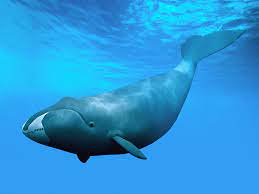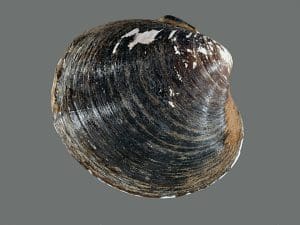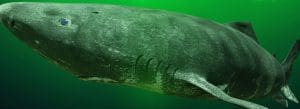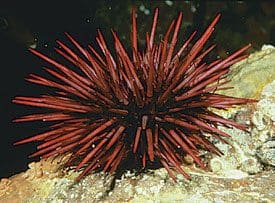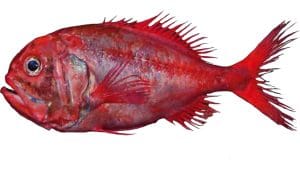
The oceans hold a myriad of wonders, from colorful coral reefs to majestic whales, but one of the most intriguing aspects of marine life is the incredible longevity exhibited by certain species. Throughout the vast depths of the sea, there are marine animals that have defied the passage of time, astonishing scientists and captivating the imagination of people worldwide.
In this article, we will delve into the fascinating world of “Surprisingly Long-Lived Marine Animals.” We will explore some of the remarkable creatures that inhabit our oceans and uncover the secrets behind their extended lifespans. Join us on this journey of discovery as we unveil the hidden stories of these extraordinary beings and the importance of preserving their oceanic habitats for generations to come.
Contents
The Ocean, a World of Longevity.🐟
The vast expanse of the ocean is a realm of wonder, teeming with diverse and enigmatic marine life. Beyond its apparent beauty and biodiversity, the ocean holds another remarkable aspect that has intrigued scientists for centuries: the prevalence of surprisingly long-lived creatures. In this section, we will explore how the ocean becomes a haven for some of the planet’s most long-lived beings, unveiling the secrets behind their extended lifespans.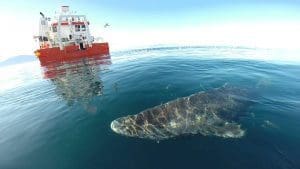
Brief explanation of how the ocean harbors some of the planet’s longest-lived creatures:
The ocean provides a home to a multitude of species that boast extraordinary longevity. These marine animals have evolved unique adaptations that enable them to thrive and survive for extended periods. Among the most well-known long-lived creatures are marine mammals like the bowhead whale (Balaena mysticetus), which can live for over two centuries, and the ocean quahog (Arctica islandica), a mollusk that has been found to live up to 500 years. Not only large animals, but also smaller marine organisms, like certain types of corals and sea sponges, can endure for centuries, forming ancient ecosystems beneath the waves.
Mention of the favorable conditions of the marine ecosystem for the longevity of certain species:
The marine ecosystem offers several favorable conditions that contribute to the longevity of specific marine species. One crucial factor is the relative stability of the ocean environment compared to terrestrial habitats. While land ecosystems are subject to drastic changes in temperature, weather events, and habitat disruption, the ocean provides a more consistent and buffered environment, allowing some marine animals to age gracefully.
Moreover, the ocean’s immense size and depth offer opportunities for long-lived creatures to escape predators and find suitable niches to thrive. Additionally, the abundance of food sources in marine ecosystems ensures a continuous supply of nourishment, supporting the survival and growth of these long-lived organisms.
Discovering Longevity in the Sea.🐟
Introduction: The ocean has always been a source of mystery and fascination, holding secrets that continue to astound scientists and researchers. Among the many enigmas it conceals, one stands out prominently: the longevity of certain marine animals. In this section, we will delve into the realm of scientific investigation that has unveiled the age-old question of how certain sea creatures have achieved remarkable lifespans.
Explanation of how scientists have researched and discovered the longevity of certain marine animals:
The quest to understand the longevity of marine creatures has driven scientists to explore various approaches and study these enigmatic beings in their natural habitats. One of the primary methods involves carefully studying the growth patterns found in the animals’ skeletal structures, such as bones, shells, or ear bones (otoliths). By analyzing growth rings or layers, much like counting tree rings, researchers can estimate the age of the animal.
Additionally, scientists employ advanced technologies, including radiocarbon dating and isotopic analysis, to determine the age of certain long-lived marine species accurately. These techniques help date the tissues, such as proteins and lipids, present in the animal’s body, offering valuable insights into their age and life history.
Mention of techniques used to determine the age of these creatures:
Determining the age of long-lived marine creatures requires specialized techniques tailored to each species. Some commonly used methods include:
- Radiocarbon Dating: This technique measures the levels of carbon-14 in the tissues of the animal, which helps establish its age based on the known decay rate of carbon-14.
- Otolith Analysis: Otoliths, small calcified structures found in the ears of fish, contain growth rings that form over time. Counting these rings allows scientists to estimate the age of the fish accurately.
- Growth Band Analysis: Similar to tree ring analysis, this method involves examining the growth bands found in shells, corals, and other calcified structures of marine organisms to determine their age.
- Isotopic Analysis: Scientists analyze stable isotopes present in the tissues of marine animals to infer their age and gain insights into their diet, migration patterns, and environmental history.
List of Long-Lived Marine Animals.🐟
The ocean is home to a myriad of remarkable creatures, and among them, some have captured the attention of scientists and enthusiasts due to their astonishing longevity. In this section, we will explore a fascinating list of marine animals known for their extended lifespans. Each species is unique in its own right, showcasing the wonders of evolution and adaptation in the aquatic world.
Description of diverse marine species distinguished by their longevity:
Bowhead Whale (Balaena mysticetus):
-
- Cycle of Life: Bowhead whales are among the longest-lived mammals on Earth, with a lifespan exceeding two centuries. They reach sexual maturity at around 25 to 35 years of age and can give birth to a single calf every 3 to 4 years.
- Habitat: These majestic whales primarily inhabit the Arctic and sub-Arctic regions, where they navigate through icy waters and undertake extensive migrations.
- Curiosities: Bowhead whales possess massive, robust skulls capable of breaking through ice, which they use to create breathing holes. They have a unique, bow-shaped upper jaw, from which they derive their name.

Ocean Quahog (Arctica islandica):
-
- Cycle of Life: The ocean quahog is a bivalve mollusk and holds the title of one of the oldest living animals on record. Some individuals have been estimated to live up to 500 years. They reach sexual maturity around 25 to 50 years of age.
- Habitat: Ocean quahogs are found in the North Atlantic Ocean, buried in sandy or muddy seabeds, where they filter-feed on plankton and detritus.
- Curiosities: These slow-growing mollusks have provided valuable information about past climates and ocean conditions, as the growth rings in their shells act as natural recorders of environmental changes.

Greenland Shark (Somniosus microcephalus):
-
- Cycle of Life: The Greenland shark holds the distinction of being one of the world’s longest-living vertebrates, with some individuals estimated to be over 400 years old. They reach sexual maturity at around 150 years.
- Habitat: These sharks primarily inhabit the cold waters of the Arctic and North Atlantic, where they are known to dive to impressive depths.
- Curiosities: Greenland sharks have a slow metabolism, which contributes to their extended lifespan. They are known for their unique feeding behavior, consuming a varied diet that includes fish, seals, and even polar bears.

Red Sea Urchin (Mesocentrotus franciscanus):
-
- Cycle of Life: Red sea urchins are remarkable for their longevity, with some individuals living over 200 years. They reach sexual maturity at around 15 to 20 years of age.
- Habitat: Found in the Pacific Ocean, from Alaska to Baja California, red sea urchins inhabit rocky reefs and kelp forests.
- Curiosities: These urchins play a crucial role in maintaining the health of kelp forests by controlling algae growth through grazing, making them essential components of their ecosystems.

Orange Roughy (Hoplostethus atlanticus):
-
- Cycle of Life: The orange roughy is a deep-sea fish known for its remarkable longevity, with some individuals living up to 150 years. They reach sexual maturity at around 20 to 40 years of age.
- Habitat: These fish inhabit deep-sea areas, residing at depths of up to 1,800 meters, and are found in various oceans worldwide.
- Curiosities: Orange roughy have a slow growth rate and late maturation, making them particularly vulnerable to overfishing.

Factors Contributing to Longevity.🐟
The longevity of certain marine animals has captivated researchers and nature enthusiasts alike. These remarkable creatures have defied the odds, surviving for centuries in the ever-changing world of the ocean. In this section, we will explore the factors that contribute to their extended lifespans, shedding light on both the biological and environmental elements that have allowed these animals to thrive for so long.
Analysis of the biological and environmental factors enabling these animals to achieve such long lives:
Slow Metabolism:
Many long-lived marine animals exhibit a significantly slower metabolic rate compared to their shorter-lived counterparts. This reduced metabolism leads to slower cell turnover and less accumulated damage over time, contributing to a longer lifespan.
Enhanced DNA Repair Mechanisms:
Some long-lived species have developed efficient DNA repair mechanisms, helping to maintain the integrity of their genetic material and reduce the accumulation of genetic mutations associated with aging.
Efficient Immune Systems:
Robust immune systems enable these animals to fight off infections and diseases effectively, promoting their survival and overall health throughout their extended lifetimes.
Reproductive Strategies:
Long-lived marine animals often invest significant time and energy in their reproductive strategies. Some species have extended reproductive periods, produce fewer offspring, and offer parental care, ensuring the survival and success of their offspring in challenging marine environments.
Predation and Competition:
Certain marine species have evolved to avoid predation or outcompete their rivals effectively. By reducing the risk of predation or resource scarcity, they can lead longer, more prosperous lives.
Environmental Stability:
The ocean’s relatively stable environment, compared to terrestrial habitats, provides a consistent and buffered ecosystem for some marine animals. This stability allows them to adapt and thrive over extended periods.
Unique Adaptations:
Long-lived marine species often possess unique biological adaptations that contribute to their longevity. These adaptations may include the ability to withstand extreme pressures, resist cold temperatures, and cope with fluctuations in food availability.
Explanation of how some species have developed unique survival and adaptation mechanisms:
Anti-Aging Proteins:
Some long-lived marine animals produce specific proteins known as anti-aging proteins. These proteins play crucial roles in repairing cellular damage, regulating cellular processes, and enhancing longevity.
Cellular Stress Resistance:
Certain species have evolved enhanced cellular stress resistance mechanisms, allowing them to withstand environmental stressors and maintain cellular function even under challenging conditions.
Energy Efficiency:
Long-lived marine animals are often highly energy-efficient, minimizing energy wastage and optimizing energy utilization for vital processes, which contributes to their overall health and longevity.
Long-Distance Migration:
Species with long-distance migration patterns can access various food sources and breeding grounds, reducing the risk of resource depletion in a particular area and supporting their extended lifespans.
Case Studies and Recent Discoveries.🐟
The study of long-lived marine animals has been a subject of intense scientific inquiry, leading to numerous groundbreaking discoveries. Recent research has unveiled remarkable insights into the lives of these extraordinary creatures, shedding light on their longevity and the factors contributing to their extended lifespans. In this section, we will explore notable research findings related to the longevity of marine animals and highlight some studies that have revealed surprising information about the age of certain species.
a. Comments on recent research related to the longevity of marine animals and key findings:
Bowhead Whale Age Assessment:
In a groundbreaking study, researchers analyzed the eye lenses of deceased bowhead whales to determine their age accurately. The eye lenses revealed growth layers, similar to tree rings, allowing scientists to estimate the age of these majestic creatures. The study found that some bowhead whales were over 200 years old, making them one of the longest-lived mammals on Earth.
Ocean Quahog Longevity Confirmation:
Recent investigations into the age of ocean quahogs provided further evidence of their extraordinary lifespan. By analyzing growth rings in the shells of these bivalve mollusks, researchers confirmed that some individuals could indeed live for centuries. These findings solidify the ocean quahog’s status as one of the oldest living animals on the planet.
Greenland Shark’s Secret to Longevity:
In a captivating study on Greenland sharks, scientists utilized radiocarbon dating to estimate the age of these mysterious creatures. The results revealed that some Greenland sharks could live for over 400 years, making them one of the longest-lived vertebrates. Additionally, researchers discovered that these sharks exhibit slow growth rates and have a unique ability to resist diseases, factors contributing to their impressive longevity.
b. Examples of studies revealing surprising information about the age of certain species:
Red Sea Urchin Age Determination:
Researchers conducted a study on red sea urchins to ascertain their longevity. By analyzing the growth bands in the urchins’ shells, they uncovered that some individuals could live for more than 200 years. This finding was unexpected, considering the relatively small size of red sea urchins compared to other long-lived marine animals.
Orange Roughy’s Slow Growth Rate:
A study on orange roughy, a deep-sea fish known for its longevity, revealed a startling fact about their growth rate. These fish were found to grow incredibly slowly, and individuals may not reach sexual maturity until they are 20 to 40 years old. This slow growth contributes to their ability to live for up to 150 years, highlighting the significance of their unique survival strategy.
Importance of Conservation.🐟
The significance of conservation for long-lived marine animals cannot be overstated. These remarkable creatures, with their extended lifespans, play vital roles in maintaining the ecological balance and biodiversity of the ocean. Preserving their habitats and ensuring their survival is crucial not only for the health of marine ecosystems but also for our understanding of aging and the natural world.
Conservation efforts are essential to safeguarding the delicate balance of marine ecosystems, where long-lived species serve as keystone organisms. These animals, often occupying top positions in the food chain, exert a significant influence on the abundance and distribution of other species. Protecting them helps maintain the ecological structure and functioning of the entire marine environment.

